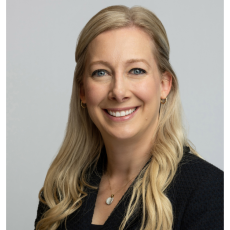How would you pinpoint the moment when sustainability became a priority for Manulife?
Sustainability has been anchored in the purpose of our company for 150 years. As a global life and health insurance company, we are quite literally invested in the health and well-being of people around the world. Environmental sustainability and biodiversity have been at the core of our investments in agriculture and timberland which have been in operation for almost 40 years.
We recently reinforced our commitment to sustainability in 2021 with the release of a detailed Climate Action Plan focusing not only on reducing our own emissions but also acknowledging our desire to get to net zero at the firm level and making a public commitment to figuring out how we can achieve this in the medium term.
During 2021, we introduced our global Impact Agenda, highlighting our key focus areas for creating long-term value for our stakeholders. This marked a pivotal moment for us, leveraging a deep-seated foundation of sustainability that has been present since our inception.
What role does the insurance sector play in addressing climate change?
Insurance plays a pivotal role in tackling climate change due to two main aspects: long-term investments and the direct impact of climate issues on the health and well-being of our customers. Insurance companies, including ours with a substantial General Account, take a long-term view, giving them a perspective that underlines the importance of considering climate and biodiversity risks. Furthermore, being in the life and health insurance sector, the health of societies globally is intrinsically linked to our business model, with a healthier clientele benefitting not just our operations, but our communities. We call this shared value.
For instance, we have partnered with the Intact Center at the University of Waterloo to explore the repercussions of climate events on mental health. The research unveiled a substantial impact on community mental health due to significant flooding, an underexplored consequence of climate change. This understanding reflects a broader vision where climate effects permeate various societal aspects, implicitly affecting the insurance domain. Addressing these issues head-on is not just a matter of corporate responsibility, but a pivotal business strategy aligning with our core principles.
Can you talk about the commitment of your company to ensuring the appropriate allocation of funds to the right environmental projects?
Our commitments stem from the detailed strategy as laid out in our Climate Action Plan. We’re in a unique position given that we are already carbon-negative in our operations due to our timberland and agriculture assets, where we naturally remove more carbon from the atmosphere than we emit. Yet, we seek to do more, which is why we have committed publicly to further reducing our Scope 1 and Scope 2 emissions by another 40% by 2035. Our goal is to reach net zero by 2050, guided by short-term targets focusing on reducing emissions of our General Account in the most carbon-intensive sectors we invest in.
Moreover, as a top-30 global wealth and asset manager, we are dedicated to offering investment products and strategies that allow market participants the opportunity to contribute to financing the transition to greener alternatives. Our aim is to foster increased access to sustainable investment avenues across all these platforms, thereby enabling a broad spectrum of investors to be part of the green transition, and playing a vital role in driving forward a sustainable future.
Can you highlight some initiatives Manulife is involved in that relate to sustainability and biodiversity?
Certainly, sustainability and biodiversity are areas we deeply care about and have integrated into various components of our operations. In the realm of timberland and agriculture, we have actively pursued third-party sustainability certifications to affirm our commitment to responsible practices. Being a founding partner with Leading Harvest, a sustainable agriculture certification entity, reflects our priority to ensure our forests and farmlands are sustainably managed, offering investors the confidence that they are partnering with a credible entity.

Furthermore, our focus on sustainability extends to our real estate portfolio where 82% have achieved green building certification, meeting recognized standards for environmentally responsible construction.
In addition to traditional green standards, we prioritize healthy building certifications such as Fitwel, emphasizing aspects like green spaces and improved airflow, which enhance the health of building occupants. This dual approach ensures we cater to both environmental and health-centric benchmarks, reflecting a comprehensive view of sustainability.
Could you discuss Manulife's business segments and how sustainability is reflected across these segments?
Manulife operates across four main business segments globally: our global wealth and asset management division, the U.S. segment operating as John Hancock, a presence in 13 markets in Asia, and a segment in Canada. In Canada and Asia, we offer a diverse range of insurance products including individual and group benefits, travel insurance, and others. Unique to Canada is the Manulife Bank, a digital-only entity, with its ATMs powered completely by green energy, a testament to our ethos of embedding sustainability into every facet of our business, however small.
Additionally, we have initiated innovative challenges through platforms like Uplink by the World Economic Forum, aiming to foster fresh, sustainable solutions in the natural built environment and agriculture practices.
How does Manulife combat greenwashing and ensure transparency in its sustainability initiatives?
Transparency is central to the approach to negating greenwashing. At Manulife, we aim to employ strong financial-grade control processes and data analyses, underpinned by detailed disclosures to help maintain clarity in our sustainability practices. This extends to having sustainability representatives across our organization trained to maintain the highest standards using comprehensive data.
Where do you envision Manulife and the broader insurance sector standing in the fight against climate change three years from now?
In the next three years, I foresee the industry working on fulfilling the commitments we have set for ourselves, with improving data supporting greater alignment with sustainability goals. The focus will be on the execution of our climate transition and implementation plans, all while maintaining a transparent communication of our progress.
I also envisage a substantial increase in collaboration among entities in the financial services sector. By learning from each other and working together where suitable, we can address shared challenges such as data management more effectively.






